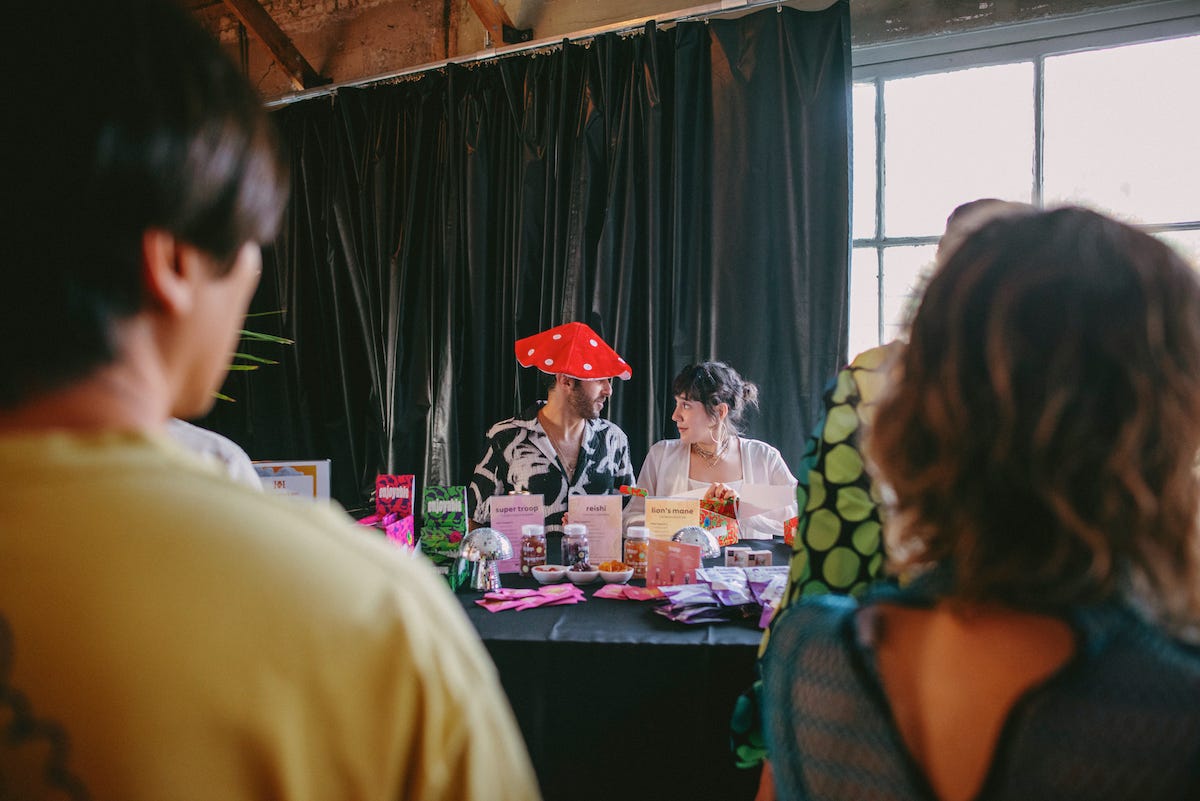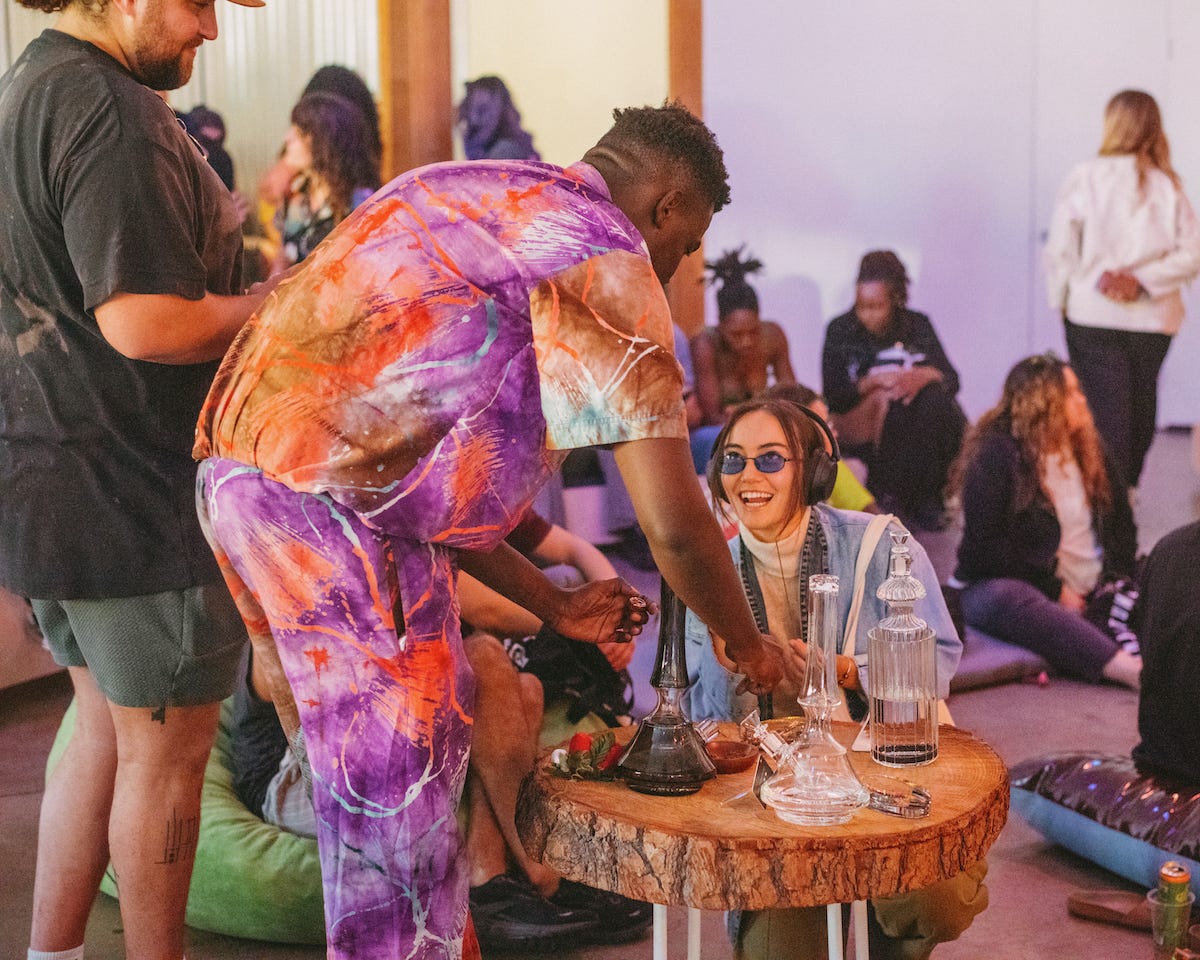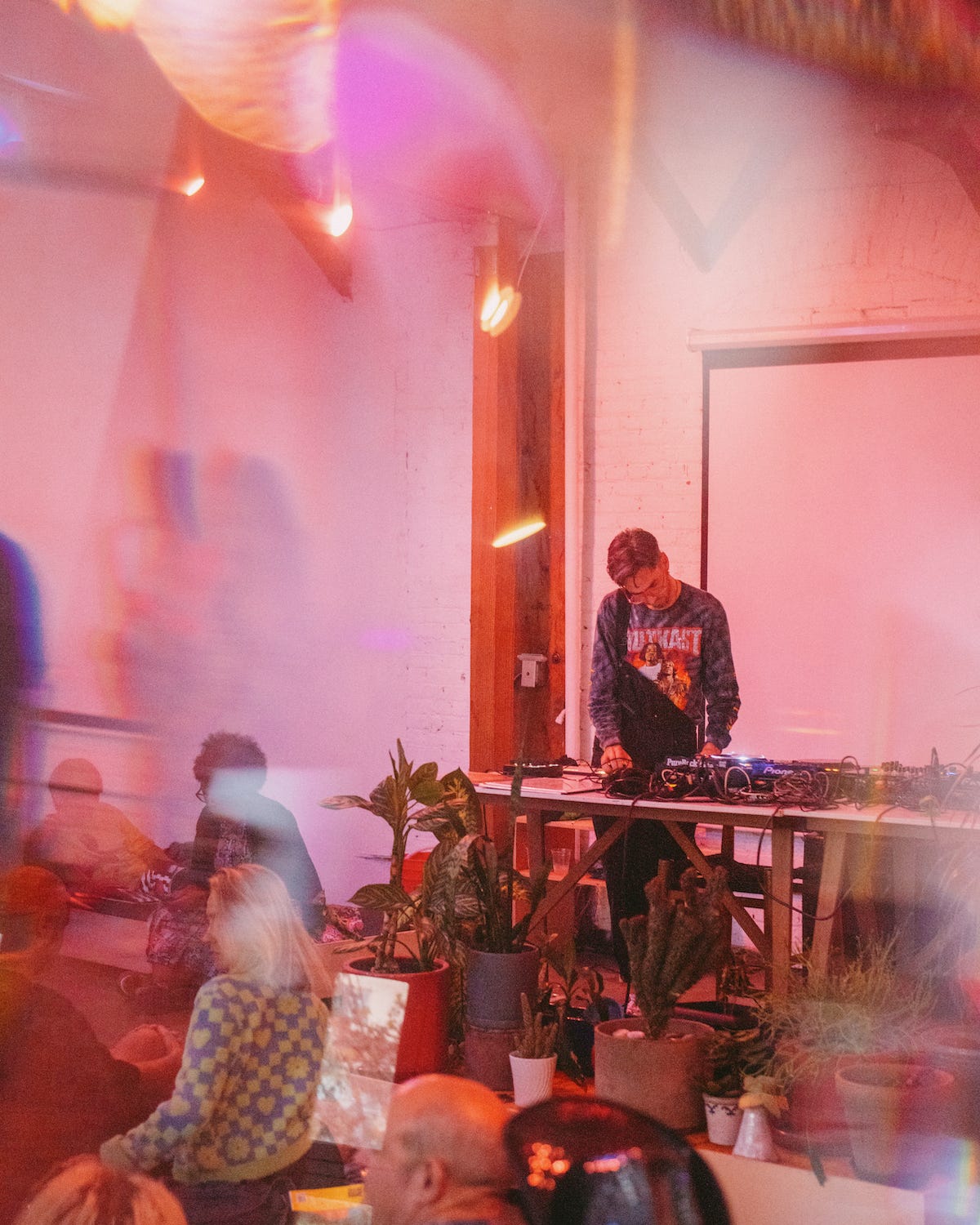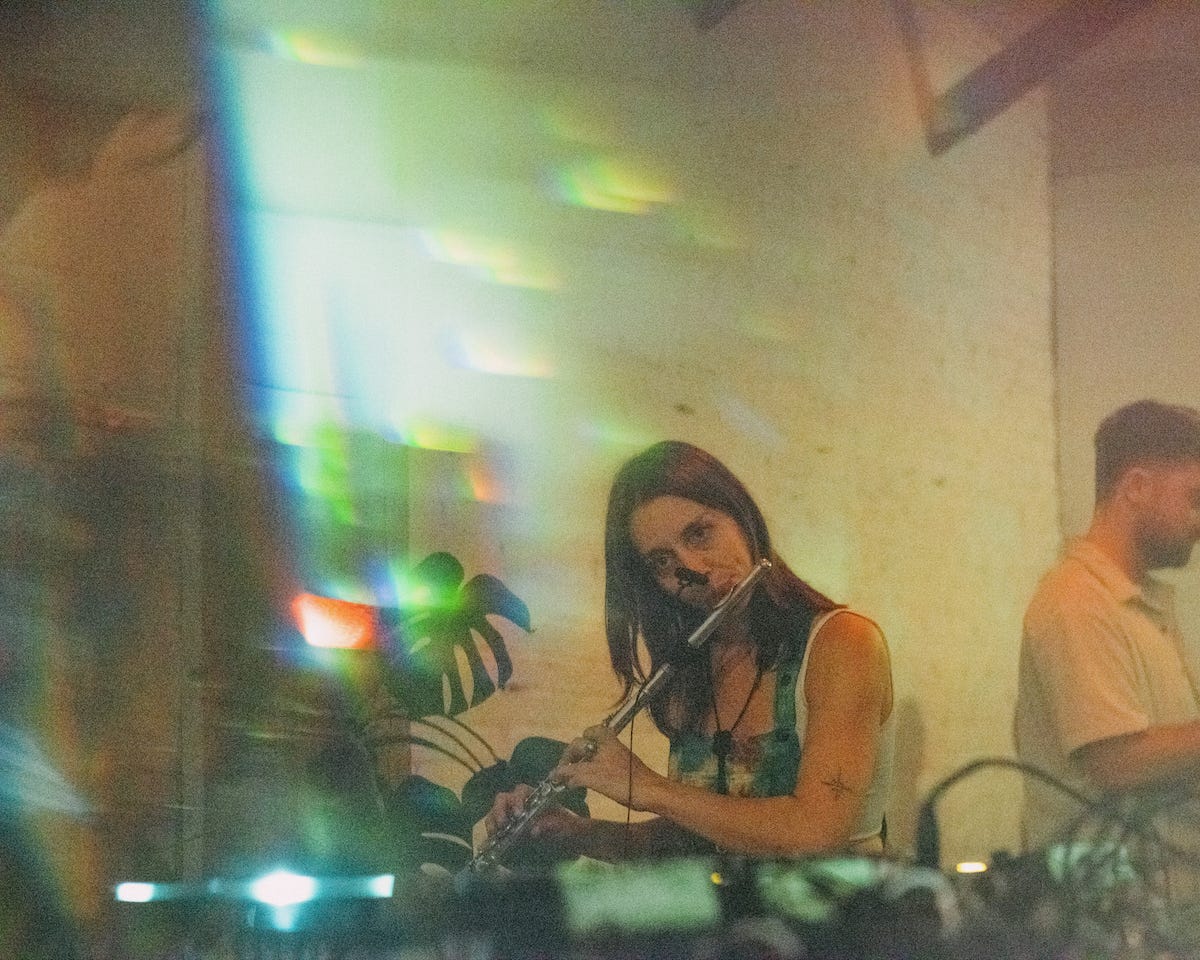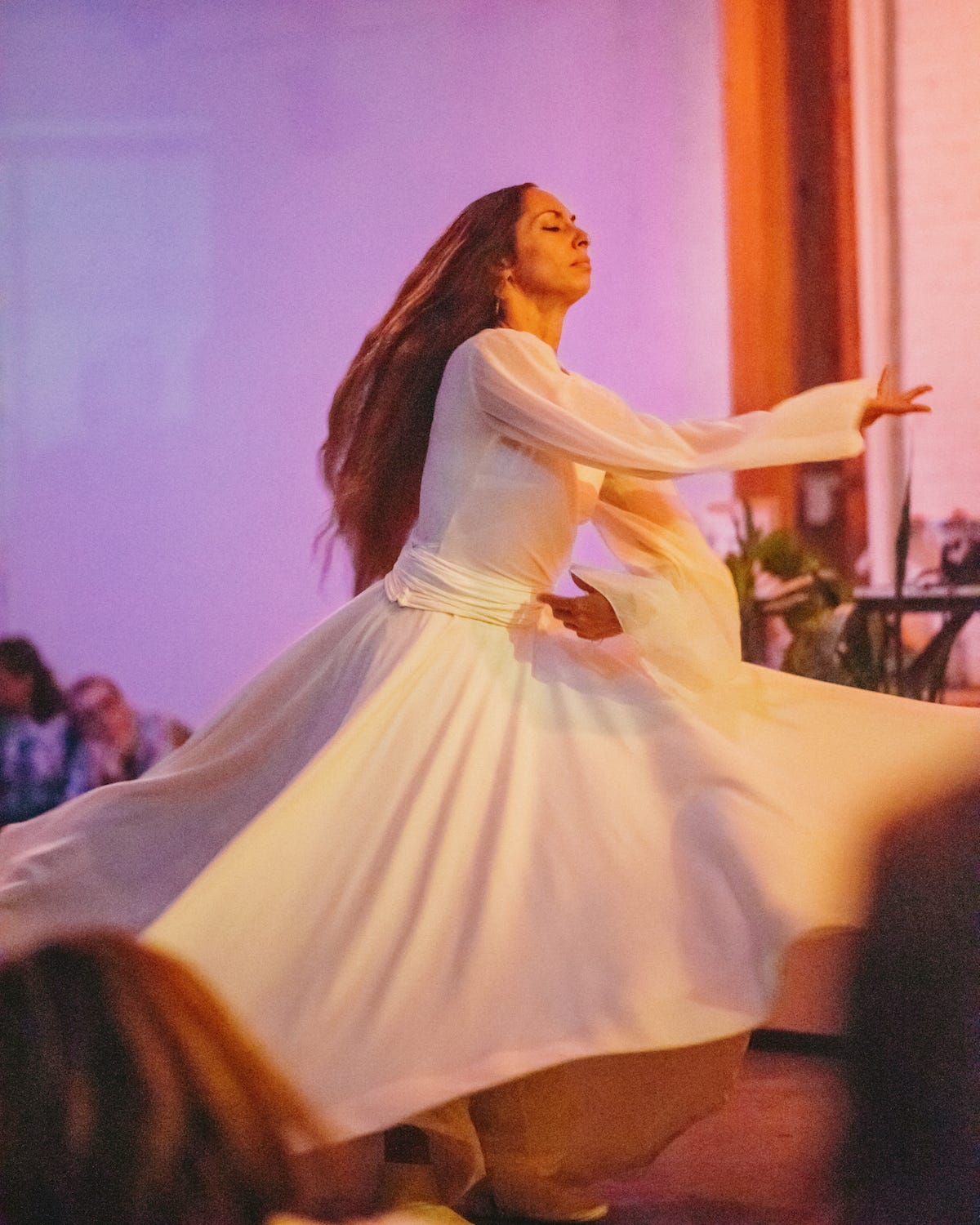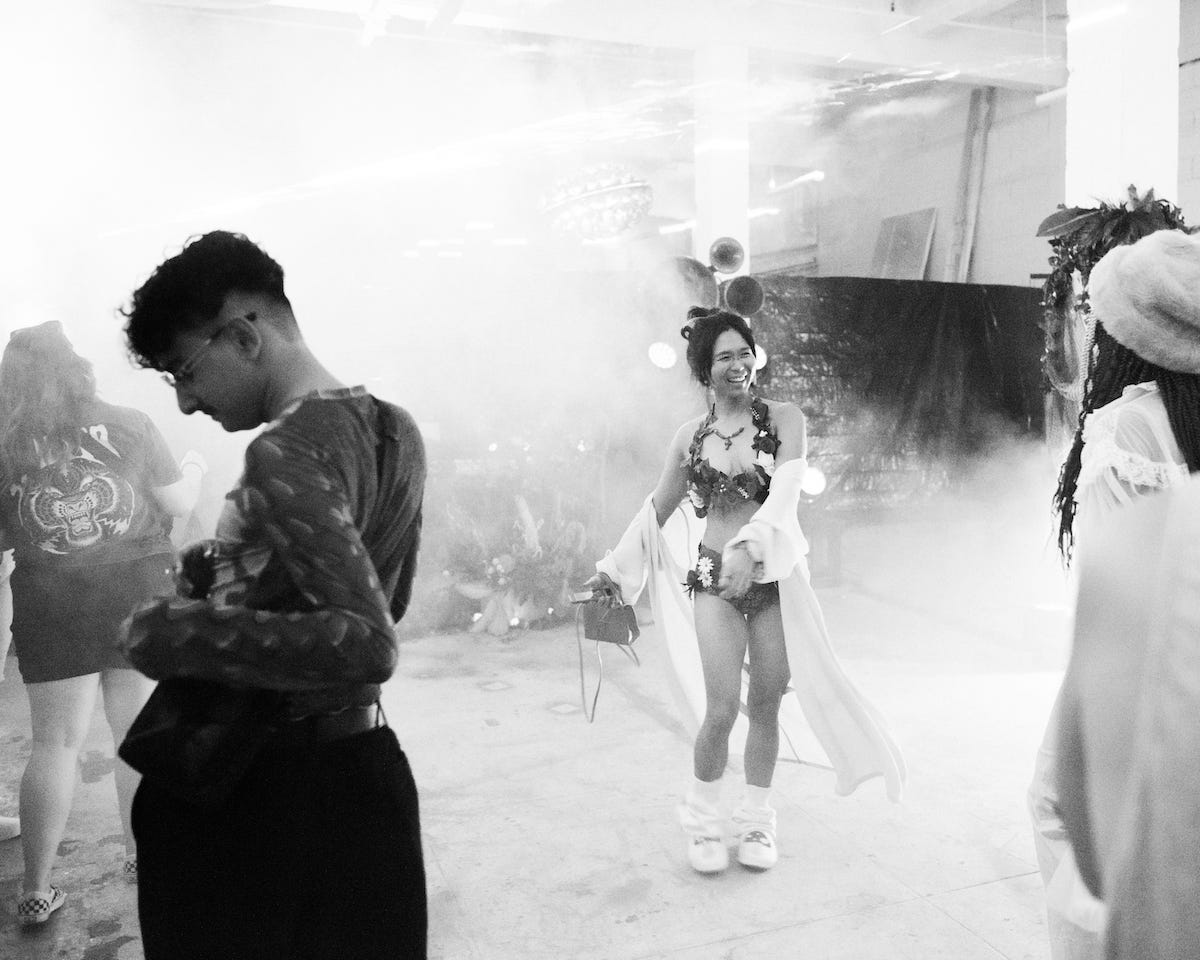Welcome to all the new readers who’ve been sucked into the Rave New World vortex from our last collaborative party with DoubleBlind, please stick around if you wanna get weird. It’s been a month since Shroom Rave: R&R, enough time for us to screw our heads back on. This week, I wanted to examine the decomposing remains of the party with a bit of critical distance: what was in the soil that made this fermentation so potent? What went well… and what went wrong?
Later this week, I’ll be dropping a paywalled post opening up about the challenges and lessons I’ve learned from throwing psychedelic parties. Subscribe to make sure you don’t miss it—as well as more reporting from recent excavations into New York and Singapore’s underground, where synchronous death portals + dancefloor grief practices are blooming…
When Shroom Rave first sprouted in the summer of 2021, the world was still recovering from the pandemic’s longtail of death and disruption. From the beginning, the party was conceived as a grief ritual; “for too long this sadness has been stagnant in our bodies,” I wrote back then, “finally, a chance for catharsis.” Avoiding park rangers and the police, a small circle of friends and acquaintances I’d summoned through my newsletter Rave New World gathered in an undisclosed forest grove, sharing mushroom chocolates and dancing to spidery psytrance under a full moon eclipse.
As the party evolved from these renegade roots, themes of death and psychospiritual rebirth continued to permeate its underlying ethos. Shroom Rave’s second edition earlier this year, titled Mushwomb, infamously featured a giant LED-lit pussy portal at the door, which attendees waltzed through in order to be “birthed” onto the dancefloor.
Mushrooms, after all, are potent symbols of reincarnation: by feeding on decomposing matter, they alchemize decay into new growth. As a sort of waste management service, mushrooms also challenge our binary notions of life and death, showing how they exist in symbiosis. In other words, death is a technology that drives the cycles of evolution. From the muck, we reach for the heavens.

When I joined forces with DoubleBlind for Shroom Rave’s third edition, our vision was to explore the non-binary relationship between ritual and raving. This latest edition, called “R&R,” featured plant medicine ceremonies alongside breathwork, massages, and a grotto-like rave cave, as well as a full bar of non-alcoholic cocktails and a bevy of psychoactive products from our sponsors.
Melding the syncretic spiritualism of plant medicine ceremonies with the collective catharsis of ravespace, this convergence of the sacred and profane was, as our elf-eared guest Erik Davis later described in his newsletter, a “yin-yang take on the eternal fete.”

A laborious search for the ideal container to host our psychedelic party took me and DoubleBlind’s EIC Shelby Hartman everywhere from private ranches to weed-friendly warehouses to DIY artist lofts. Finally, we landed at Navel, a beloved queer-run arts nonprofit in downtown Los Angeles with a sunny upstairs loft and cavernous basement—perfectly dualistic environs for us to flesh out our concept.
Two weeks before the party’s due date, Israel began its aerial bombardment of the Gaza Strip following Hamas’ deadly attacks. As a deluge of death and suffering suddenly consumed our feeds, the collective consciousness was overwhelmed with feelings of horror, abjection, helplessness, doom, grief. A familiar question raised during the pandemic percolated again, this time in stark relief: what is the place of raving amidst so much mourning? Admittedly, I began to feel dissociated from the laborious process of party planning, unsure if there was a right way to carry on.
But the cataclysmic political conditions also intensified the stakes of Shroom Rave’s thesis, which is that there is an urgent need for third spaces of collective care in this era of social collapse. By amplifying more intimate and introspective modes of connection alongside the intensely visceral and cathartic release of the dancefloor, psychedelic parties can be a refreshingly wholesome alternative to the hardened hedonism of nightlife. A new wave of raves and venues all over the world have been rising to meet the collective desire for these sorts of spaces, but Los Angeles—with its colorful collision of New Age culture and psychedelia, plus an eager predilection for sun-baked reinvention—is a particularly potent place for such an experiment.
“Part of utopia’s revolutionary relevance is its revelatory access to the not-yet-conscious,” writes Luis Manuel Garcia-Mispireta in his new book on nightlife titled Together, Somehow. “In this sense, utopianism can amplify revolutionary politics by creating an imaginative space where…a demand for a better world can be articulated.”
So on Sunday October 22, the portal to R&R’s shroom-topia opened as the autumn sun slipped into a golden late-afternoon sheen. Guests arriving into Navel’s darkened lobby stepped into a landscape of plants, moss, and incense; climbing up a candlelit flight of stairs, they proceeded into a darkened hallway where a custom scent installation by UFO Parfums diffused a series of smells inspired by the party. One perfume, named after the shroom strain Penis Envy, was so pungent that some partygoers gagged and ran away, while others sniffed deeper, eyes widening.
The hallway opened into the upstairs ritual room, a sweeping sun-dappled space with wraparound windows overlooking crimson-hued trees. At the DJ booth, Eau played an opening set of deconstructed club music soundscapes, while against the back wall, ambassadors from Ketamine Clinics Los Angeles welcomed early arrivals with snacks, cookies, and education on the potential of ketamine infusions for mental health. Then, Tristan Victor began the opening ritual: a land acknowledgement followed by prayer where the crowd was instructed to turn facing each side of the room as Victor spoke of each direction’s symbolic meaning. Later, he explained that this rite derived from the Aztec Tezcatlipoca tradition. “It is a way to honor our ancestral Mexíca roots, while centering us in space and time so we have the clarity, strength, and power to continue persevering.”
Following this opening ritual, a circle gathered around Skye Weaver, one of DoubleBlind’s resident facilitators, for a cannabis ceremony that aptly began at 4:20pm. Thanks to Alef, everyone who wanted to participate received joints or nugs that could be smoked out of GRAV’s elegant glass pipes and bongs, which were placed around the room. A sense of stoner solidarity arose as strangers shared bong hits and settled into meditative poses. Weaver then led us in a breathwork session, and within minutes, a profound sense of release flooded my body as I bowed to the ground, crying; turning around to Shelby, I noticed her cheeks were wet, too.
As the session concluded, we rose to our feet slowly and the party commenced. R&R was partly inspired by Burning Man’s decentralized micro-environments where one can drop into a variety of experiences at any moment. In a nearby glass-enclosed room, chef Heidi Rushforth served rice balls made with mushrooms from the organic farm Smallhold, foraged seaweed vinegar, and Daniel Benhaim’s smoked lentil and kelp shoyu. (Check out our interview with Heidi here!) These delicious concoctions were washed down with steaming cups of Taiwanese tea served by our friends from Standstill.
Next door, a candlelit chill zone sponsored by LUCY provided a cushy safe space for anyone needing to take a break from all the stimulation, with psychedelic integration guides on hand for those who might be experiencing a difficult trip. “I was so grateful for this zone after I took a huge bump of ketamine and just needed to lay down…” confessed a friend.
Struggling a little to recover my composure from the cannabis and breathwork session, I slipped into the spa room—a darkened sanctuary where bodyworkers from Remember This Feeling and Trilome Academy were giving massages using lavender, patchouli, and bergamot oils from Solvasa, under a banner that read: DO YOU FEEL SAFE? When I re-emerged into the beanbag-lounging milieu, Leaving Records founder Matthewdavid was weaving an otherworldly soundscape of gurgling synth tones, insectoid crackles, and fragile melodies from his albums Mycelial Music and On Mushrooms, later joined for an improvisatory jam session by Hailey Niswanger, who played the saxophone while partially hidden behind a fern.
Approaching the bar, I perused the bevy of non-alcoholic cocktail options created by our bartenders, which included Calexo’s THC-infused seltzer, Visitor’s malty zero-proof beer, and a blood orange Negroni made with the botanical mixer Optimist, eventually deciding on a spicy Slowburn Sling from Bonbuz that contained caffeine and a variety of adaptogens like 5-HTP and L-tyrosine. Removing booze from the variety of substances on offer at the party was a tricky balancing act: most music and nightlife events still rely heavily on alcohol drink sales to stay afloat. While the decision to go alcohol-free ultimately did impact our bottom-line, it also undeniably helped to facilitate an unparalleled vibe shift, encouraging a sense of deeper presence and openness in the ways people at the party interacted with each other, both on and off the dancefloor.
A second bar also served as a pharmacopeia of legal psychoactive products, with bartenders distributing samples of products such as tinctures and chews from KA! that contained kanna, a South African succulent known for its the heart-opening effects; herbal cigarettes from Puff Herbal Smokes; vegan weed gummies from Enjoyable CBD; adaptogenic mushroom sprays from Supermush; functional mushroom gummies from Troop and; Amanita mushroom gummies from Koi. If some of these products sound alien to you, that was kind of the point. Illegal substances are often more highly desired because of a combination of street cred and potent effects, but a whole world of other nootropics and psychoactives are already available on the market due to existing laws or loopholes. We wanted to show how, even though these substances sometimes engender gentler or more subtle experiences than classic psychedelics like LSD or DMT, that doesn’t mean they’re less interesting or helpful.

At nightfall, I finally made my way downstairs to the rave cave, where DJ Ty was spinning dark acid techno behind a DJ booth designed by the artist Kolby Keene to resemble a mushroom shrine in a swampy grotto, complete with a tiny gnome buried amongst the morass of twig branches, candles, and flowers. Dancers were twirling around an absurdly gigantic 12-foot mushroom we’d installed in the middle of the space, or taking a break from the dancefloor in a hallucinatory lounge covered in flamingo sculptures and chandeliers. In the corner, a pop-up bar set up by New Brew sold drinks infused with both kratom and kava—a combination that delivered a sense of euphoric floatiness without the hangover. I was chomping at the bit for the closing set by Carlos Souffront, a veritable legend in the techno underground for his inimitably complex mixing style and formidable collection of acid-laced slappers. As usual, he delivered.
It was difficult to tear away from Souffront’s set to head back upstairs, but I also wanted to catch the Iranian whirling dervish meditation back upstairs. Nootropic company Magi had distributed supplements with beta-carbolines extracted from Syrian rue, an ancestral plant used by the Zoroastrian priests of ancient Iran that is said to deepen a sense of meditation. Dancer Miriam Peretz began spinning in increasingly tighter circles as Iranian-American DJ Maral accompanied her with a soundtrack of traditional Iranian songs; the effect was hypnotic, and the perfect closing ritual before Sasha Desiree hopped on for the final act.
By the end of the night, my exhaustion was matched only by a sense of exhilaration: R&R was finally over, but in the fallen flowers strewn on the floor at the end of the night, something new was also germinating: a reimagining of why we gather—and how we grieve.
SCENE AND HEARD
Berlin-based dance magazine Electronic Beats has a fun podcast that always captures the back-room conversation buzzing around the global electronic music scene. I hopped on to talk about post-alcohol partying.
Conspirituality is a delightfully brainy pod that rips the woo-woo world of New Age conspiracies and cognitive dissonances to shreds. I came on to discuss the rise of new-right counterculture with co-host Derek Beres—along with my reporting on the seductive psy-op of Bari Weiss.
UC Berkeley’s Center for the Science of Psychedelics has a newsletter called The Microdose that is doing some of the best psychedelic journalism in the game. Staff writer Jane C. Hu asked me five questions about psychedelic trends in the rave scene.
Shroom Rave: Mushwomb alum SPRKLBB recently shared his set from Draaimolen—where he WERKED the fairies at the Forest Rave, a stage curated by Octa Octa and Eris Drew. Let his effervescent set of cunty house and microwaved pop edits carry you into the week ahead…





